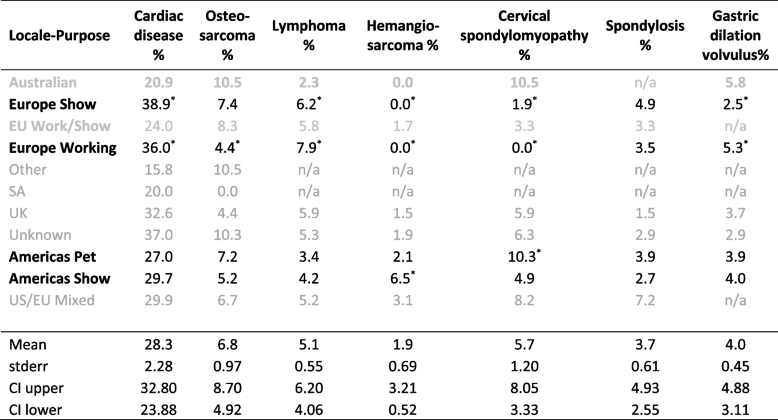Dobermann Dog Breed - Genetic Diversity and Inherited Disease Risk - Application of Citizen Science
Comment: Grassroots efforts by people who know and care for breeds can lead to better understanding of issues affecting breeds of dogs - this study taps into internationally based "Citizen Science" project collections along with Kennel Club resources. It is remarkable that in today's sometimes divisive society, where different views of how to best manage dog health and welfare exist, that Citizen Science project data collected can be analyzed by scientific researchers to offer potential ideas for moving forward to improve dog's lives.
See: Wade, C.M., Nuttall, R. & Liu, S. Comprehensive analysis of geographic and breed-purpose influences on genetic diversity and inherited disease risk in the Doberman dog breed. Canine Med Genet 10, 7 (2023). https://doi.org/10.1186/s40575-023-00130-3
Note: 3,226 dogs are included in this study.
Background
"Publicly available phenotype data and genotyping array data from two citizen science projects: “Doberman Health Surveys” and “The Doberman Diversity Project” were analyzed to explore relative homozygosity, diversity, and disorder risk according to geographical locale and breeding purpose in the Doberman."
Excerpt...
"By genotyping, the world Doberman population exists as four major cohorts (European exhibition-bred, Americas exhibition-bred, European work, Americas pet/informal)."
Check out this study to...
- see life expectancy data differentiated by cohort (1,738 reported ages at death)
- disease incidence including dilated cardiomyopathy, congestive heart failure, osteosarcoma, cervical spondylomyelopathy (wobblers), lymphoma, gastric dilation volvulus (bloat), spondylosis and haemangiosarcoma.
Important to note... related to diversity
"...the (Dobermann) breed has had a purpose divided between the original breed working function and as a family companion. As is common in working dog breeds, division of purpose has resulted in differences in breeding objectives between breeders producing animals fit for each purpose."
The figures and tables in this paper are revealing.
Fig. 1.
Survival curves for locale-purpose cohorts phenotyped
The leading causes of death according to dog age in years at the time of death across all locales are described in Fig. 2.
Availability of data and materials for this study
Electronic information relating to Doberman lifespan and cause of death are available from: https://dobehealth.org/results/index.php
Access to genotyping data is provided on request from the Doberman Diversity Project: https://dobermandiversityproject.org/
RELATED CONTENT - DogWellNet
Fine tuning breeding choices to address breed predispositions to develop disease based on evidence is the goal of responsible breeders.
Breed and Public Education are key to improving lives of dogs.
See the POSTER from the Doberman Diversity Project... which was displayed at the 4th International Dog Health Workshop.
The poster provides an overview of results of genetic testing done by Embark through its Doberman Diversity Project panel test.
Genetic disease predisposition and diversity information is available.
Also see our article, Get a GRIHP! on the Dobermann
Dobermann - DWN's Pedigree Dogs DB page
 Donate
Donate

0 Comments
Recommended Comments
There are no comments to display.